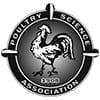Explore all the information on
Poultry nutrition - Other additives
Alternative feed additives have promising importance in broiler production due to the ban on the use of certain antibiotics. The most used antibiotic alternatives in broiler production are phytogenics, organic acids, prebiotics, probiotics, enzymes, and their derivatives. Antibiotic alternatives have been reported to increase feed intake, stimulate digestion, improve feed efficiency, increase growth performance, and reduce the incidence of diseases by modulating the intestinal microbiota and immune system, inhibiting pathogens, and improving intestinal integrity. Simply, the gut microbiota is the target to raise the health benefits and growth-promoting effects of feed additives on broilers. Therefore, naturally available feed additives are promising antibiotic alternatives for broilers.
Kevin Downs (Middle Tennessee State University) talks to Sam Shafer (PSA) about research regarding possible color effects on the birds when feeding them. Let's Squawk About It is a monthly interview segment by the Poultry Science Association....
Comments : 0
Recommendations: 4
A feeding study was conducted to examine the efficacy of a synergistic blend of feed additives on growth performance, livability, gut integrity, immunity, caecal microflora and footpad health in broilers challenged with subclinical necrotic enteritis (NE). Additives were: A) synergistic blend of medium chain fatty acids (MCFA), slow-release C12, target release butyrates, organic acids (OA) and a phenolic compound; B) synergistic blend of partly buffered OA with MCFA; C) synergistic blend of...
Comments : 0
Recommendations: 1
Introduction Modern agriculture constantly strives to maximize biological performance of food production in an effort to optimize economic efficiency, profit potential, and sustainability. Commercial poultry production is among the most efficient and progressively successful of all food production sectors. What factors does it take for continued success in efficient poultry production? It takes the right genetics, combined with optimum health and management practices,...
Comments : 1
Recommendations: 5
INTRODUCTION Soybean meal´s good amino acids (AA) balance makes it an excellent protein source in poultry diets, although it does have the disadvantage of containing antinutritional factors such as trypsin inhibitors and lectins. These can negatively affect animal growth if the SBM is not adequately processed(1) using a proper cooking time and temperature to deactivate these factors(2). Excessive heat, however, can cause Maillard reactions, destroying thermolabile AA such...
Comments : 3
Recommendations: 1
...
Comments : 0
Recommendations: 0
...
Comments : 0
Recommendations: 0
What indicators are there that the feed is processed and manufactured well? Why the Mixer Matters in Animal Protein Production? Hear what Dr. Johnny Wilson has to say about these topics...
Comments : 0
Recommendations: 4
I. INTRODUCTION Global chicken-meat production has been predicted to increase considerably between 2005 and 2050 (Alexandratos and Bruisma, 2012) and this demands sustainable practices. Reducing dietary crude protein (CP) substantially without compromising broiler performance has the potential to provide tangible reductions in nitrogen excretion and environmental pollution, with improved bird welfare outcomes and economic benefits (Kidd and Choct, 2017). Substantial...
Comments : 0
Recommendations: 2
.jpg&w=3840&q=75)

All-in-one mycotoxin extraction method for faster time-to-results - Myco 5-in-1 PLUS
Suggested link
INTRODUCTION According to the World Health Organization, Campylobacter is a leading cause of the diarrheal disease (World Health Organization [WHO], 2018). The genus Campylobacter is comprised of over 20 species. Strains of Campylobacter jejuni and Campylobacter coli are generally considered some of the more significant concerns among foodborne pathogens for human health (Korczak et al., 2006; Havelaar et al., 2012; World Health Organization [WHO], 2018; Centers for Disease...
Comments : 0
Recommendations: 1
1. Introduction Poultry and mycotoxins have been closely linked for several decades, as they are one of the most sensitive animal species to the toxic effects of mycotoxins. In the poultry industry, the ingestion of aflatoxin B1 (AFB1) lead to the impairment of all the essential productive parameters [1,2] and decreased resistance to common infectious diseases due to the depression of the humoral and cellular immune responses [3,4], resulting in substantial annual economic...
Comments : 0
Recommendations: 1


Effects of Muco-defen® on Clostridium perfringens-induced necrotic enteritis in broilers
Suggested link
DESCRIPTION OF THE PROBLEM In the United States, foodborne nontyphoidal salmonellosis affects approximately one million individuals, results in 378 deaths and costs approximately $3.3 billion USD annually (Scallan et al., 2011). Most of these infections are associated with animal meat and product consumption, with poultry or poultry products being the major source (Marin and Lainez, 2009). Therefore, eradication of Salmonella in the production cycle of poultry and in processing...
Comments : 0
Recommendations: 0
Due to their strong antimicrobial effect, acidifiers assist in improving feed and water hygiene standards. BIOMIN GmbH provides Biotronic® acidifier line, a family of products, combined from selected blends of organic acids. The latest know-how technology enables BIOMIN GmbH to create the highly effective acidifier products and to assure their continual functionality through feed and water into animals’ gastro-intestinal tract. The effects of various Biotronic®...
Comments : 1
Recommendations: 0


Will New Version of GMP Boost the Veterinary Drugs Industry?
Suggested link
Necrotic enteritis (NE) is a poultry disease of global concern mainly due to reduced growth, increased mortality, and increased veterinary and management costs associated with it (Wade and Keyburn, 2015). Clostridium perfringens , a spore-forming gram-positive bacterium, is considered to be the causative agent of NE in chickens. In the past, the common remedy to ameliorate the negative effects of NE was an addition of antibiotic growth promoters (AGP) in feed. However, with AGP...
Comments : 0
Recommendations: 0
Let’s talk about Guanidinoacetic acid (GAA). In this video, Lukas Bauer, Manager Technical Consultancy for GuanAMINO® at Evonik Animal Nutrition, highlights why GAA is so crucial for Improving animal’s performance land to optimized production costs ...
Comments : 0
Recommendations: 9
Antibiotics in feed have been effective in controlling the prevalence of necrotic enteritis in broilers. However, the occurrence and severity of C. perfringens -induced necrotic enteritis has increased over the years due to the banning of the use of antibiotics in food-producing animals. Thus, the poultry industry is in urgent need of alternative strategies to prevent necrotic enteritis in broilers. Probiotics have become the ideal alternative to antibiotic growth promoters....
Comments : 0
Recommendations: 1
Optimized production setup through construction of a methyl mercaptan plant in Mobile, Alabama
Consistent implementation of asset strategy, safeguarding supply security in the Americas
Investment as continued commitment to responsible care and sustainability
23 February, 2022. Germany, Essen. Evonik will build a methyl mercaptan plant at its site in Mobile, Alabama in the U.S. Methyl mercaptan is an intermediate in the production of MetAMINO®...
Comments : 0
Recommendations: 1
The objective of this study was to evaluate if the supplementation of guanidinoacetic acid (GAA) either on top or included with an energy matrix in broiler feed, improves or equalizes the productive and economic parameters in broilers, respectively. The study was carried out in an experimental farm located in the department of Santander-Colombia and lasted 34 days. A total of 1088 Ross 308 AP day-old male chickens, with an initial bodyweight of 42.5 ± 1.05 g, were allotted to four...
Comments : 0
Recommendations: 5
Dr. John Thomson, U.S. Sales Manager for Feed Additives at AlzChem, highlights the different parts of the next evolution of Animal Nutrition. Creamino® increases the creatine supply to the cells and thus enables additional improvements in growth and health....
Comments : 0
Recommendations: 4
1. Introduction To preserve the potency of clinically important antibiotics, there has been a gradual reduction and an anticipated elimination of their use in food-producing animals including broiler chickens [1]. Consequently, farmers are faced with the challenge of maintaining productivity and preventing diseases on their farms [2]. Therefore, there is a need for alternative strategies including dietary means to promote gut health and growth performance of broiler chickens....
Comments : 0
Recommendations: 0
1. Introduction Poultry and fish are both increasing in popularity as protein sources in human diets. Fish consumption has increased by 122% between 1990 and 2018 [1] with an over 500% rise in aquaculture production globally over the same timescale. Salmon production is estimated to reach 2.7 million tonnes (MT) by 2021, compared to 0.8 MT in 2000 [2]. Similarly, poultry meat production is also increasing year on year and is predicted to have reached 137 MT in 2020 [1]. This...
Comments : 0
Recommendations: 0




.jpg&w=3840&q=75)





.jpg&w=3840&q=75)



.jpg&w=3840&q=75)
























